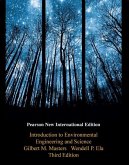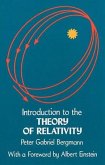Introduction to Environmental Science: Earth and Man provides a comprehensive and fully integrated interdisciplinary introduction to our planet, covering the complex interactions between chemistry, physics, biology, geology, hydrology, climatology, social science and environmental policy. Written in a lively and engaging style, it aims to stimulate interest in this dynamic and important area, and facilitate new ways of thinking about how environmental problems should be critically evaluated and solved.
Product Description
Introduction to Environmental Science: Earth and Man provides a comprehensive and fully integrated interdisciplinary introduction to our planet, covering the complex interactions between chemistry, physics, biology, geology, hydrology, climatology, social science and environmental policy. Written in a lively and engaging style, it aims to stimulate interest in this dynamic and important area, and facilitate new ways of thinking about how environmental problems should be critically evaluated and solved.
Features + Benefits
§ All chapters are written by leading specialists in their field, contributing a wealth of expertise and coverage.
§ A wide range of case studies and examples from around the world are provided to demonstrate how knowledge is applied in practice and emphasise the international dimension to environmental issues.
§ ‘Policy Implications’ boxes at the end of each chapter provide clear guidance on the relevance of environmental knowledge and research to policy makers.
§ Numerous questions and exercises included at the end of each chapter reinforce learning and test understanding of key concepts.
§ Learning outcomes and lead-in questions throughout the chapters focus and engage the reader, encouraging reflection and critical thinking.
§ Hundreds of full-colour photographs and diagrams help present key information visually and bring the text to life.
Backcover
Introduction to Environmental Science: Earth and Man provides a comprehensive and fully integrated interdisciplinary introduction to our planet, covering the complex interactions between chemistry, physics, biology, geology, hydrology, climatology, social science and environmental policy. Written in a lively and engaging style, it aims to stimulate interest in this dynamic and important area, and facilitate new ways of thinking about how environmental problems should be critically evaluated and solved.
The text presents a detailed study of how environments and systems such as waters, soils and the atmosphere evolved naturally, and also introduces discussion of the scientific processes and research that underpin and inform our knowledge. It then builds on this foundation by investigating human impacts and their potential harmful consequences, such as those of man-made chemicals, food production, and soil and atmospheric pollution, before considering strategies for creating truly sustainable solutions to these problems. Throughout the book readers are encouraged to think critically about research and to question their preconceptions, enabling them to develop the skills, understanding and enthusiasm necessary to become successful environmental scientists and policy makers of the future.
Key features
§ All chapters are written by leading specialists in their field, contributing a wealth of expertise and coverage.
§ A wide range of case studies and examples from around the world are provided to demonstrate how knowledge is applied in practice and emphasise the international dimension to environmental issues.
§ ‘Policy Implications’ boxes at the end of each chapter provide clear guidance on the relevance of environmental knowledge and research to policy makers.
§ Numerous questions and exercises included at the end of each chapter reinforce learning and test understanding of key concepts.
§ Learning outcomes and lead-in questions throughout the chapters focus and engage the reader, encouraging reflection and critical thinking.
§ Hundreds of full-colour photographs and diagrams help present key information visually and bring the text to life.
Introduction to Environmental Science: Earth and Man isan ideal textbook for students of environmental and earth sciences, geography, geology, environmental management and related subjects.
Malcolm Cresser and Alistair Boxall are Professors of Environmental Science at the University of York; Lesley Batty is a Lecturer in Environmental Science at the University of Birmingham; Craig Adams is a Professor and Head of Civil and Environmental Engineering at Utah State University.
Table of Contents
Preface
About the Authors
Chapter 1: A trip through time on planet Earth
Malcolm Cresser & Paul Ayris
Chapter 2: The global cycling and functions of water
Malcolm Cresser & Paul Ayris
Chapter 3: The origins of the atmosphere
Nicola Carslaw
Chapter 4: The natural carbon cycle
Malcolm Cresser
Chapter 5: The cycling of nitrogen and selected other elements
Malcolm Cresser
Chapter 6: Ecology and biodiversity on Earth
Lesley Batty
Chapter 7: The evolution and functions of soils
Malcolm Cresser
Chapter 8: Climate change
Nicola Carslaw
Chapter 9: Organic matter in rivers
Malcolm Cresser
Chapter 10: James Lovelock, Gaia, and beyond
Malcolm Cresser
Chapter 11: Man-made chemicals and the environment
Alistair Boxall
Chapter 12: The production of food & its environmental impacts
Malcolm Cresser & Craig Adams
Chapter 13: Wildlife disease: An emerging problem
Piran White, Monika Böhm & Michael Hutchings
Chapter 14: The use and abuse of water cycling
Malcolm Cresser & Cumhur Aydinalp
Chapter 15: Exploiting the sea for fish
Julie Hawkins & Callum Roberts
Chapter 16: Atmospheric pollution: Deposition and impacts
Malcolm Cresser
Chapter 17: How do we quantify biogeochemical cycles?
Malcolm Cresser
Chapter 18: Renewable and non-renewable energy
Craig Adams
Chapter 19: Soil pollution and abuse
Malcolm Cresser, Sophie Green & Clare Wilson
Chapter 20: Risk assessment and remediation of environmental contamination
Ken Killham & Graeme Paton
Chapter 21: Pollution swapping
Keith Goulding
Chapter 22: The trouble with man is…..or “what have you damaged today?”
Elena Dawkins & Anne Owen
Chapter 23: The nature and merits of green chemistry
Andrew Hunt and James Clark
Chapter 24: Doing environmental science at the right scale
Dave Raffaelli
Chapter 25: Biodiversity: Trends, significance, conservation and management
Dave Raffaelli
Introduction to Environmental Science: Earth and Man provides a comprehensive and fully integrated interdisciplinary introduction to our planet, covering the complex interactions between chemistry, physics, biology, geology, hydrology, climatology, social science and environmental policy. Written in a lively and engaging style, it aims to stimulate interest in this dynamic and important area, and facilitate new ways of thinking about how environmental problems should be critically evaluated and solved.
Product Description
Introduction to Environmental Science: Earth and Man provides a comprehensive and fully integrated interdisciplinary introduction to our planet, covering the complex interactions between chemistry, physics, biology, geology, hydrology, climatology, social science and environmental policy. Written in a lively and engaging style, it aims to stimulate interest in this dynamic and important area, and facilitate new ways of thinking about how environmental problems should be critically evaluated and solved.
Features + Benefits
§ All chapters are written by leading specialists in their field, contributing a wealth of expertise and coverage.
§ A wide range of case studies and examples from around the world are provided to demonstrate how knowledge is applied in practice and emphasise the international dimension to environmental issues.
§ ‘Policy Implications’ boxes at the end of each chapter provide clear guidance on the relevance of environmental knowledge and research to policy makers.
§ Numerous questions and exercises included at the end of each chapter reinforce learning and test understanding of key concepts.
§ Learning outcomes and lead-in questions throughout the chapters focus and engage the reader, encouraging reflection and critical thinking.
§ Hundreds of full-colour photographs and diagrams help present key information visually and bring the text to life.
Backcover
Introduction to Environmental Science: Earth and Man provides a comprehensive and fully integrated interdisciplinary introduction to our planet, covering the complex interactions between chemistry, physics, biology, geology, hydrology, climatology, social science and environmental policy. Written in a lively and engaging style, it aims to stimulate interest in this dynamic and important area, and facilitate new ways of thinking about how environmental problems should be critically evaluated and solved.
The text presents a detailed study of how environments and systems such as waters, soils and the atmosphere evolved naturally, and also introduces discussion of the scientific processes and research that underpin and inform our knowledge. It then builds on this foundation by investigating human impacts and their potential harmful consequences, such as those of man-made chemicals, food production, and soil and atmospheric pollution, before considering strategies for creating truly sustainable solutions to these problems. Throughout the book readers are encouraged to think critically about research and to question their preconceptions, enabling them to develop the skills, understanding and enthusiasm necessary to become successful environmental scientists and policy makers of the future.
Key features
§ All chapters are written by leading specialists in their field, contributing a wealth of expertise and coverage.
§ A wide range of case studies and examples from around the world are provided to demonstrate how knowledge is applied in practice and emphasise the international dimension to environmental issues.
§ ‘Policy Implications’ boxes at the end of each chapter provide clear guidance on the relevance of environmental knowledge and research to policy makers.
§ Numerous questions and exercises included at the end of each chapter reinforce learning and test understanding of key concepts.
§ Learning outcomes and lead-in questions throughout the chapters focus and engage the reader, encouraging reflection and critical thinking.
§ Hundreds of full-colour photographs and diagrams help present key information visually and bring the text to life.
Introduction to Environmental Science: Earth and Man isan ideal textbook for students of environmental and earth sciences, geography, geology, environmental management and related subjects.
Malcolm Cresser and Alistair Boxall are Professors of Environmental Science at the University of York; Lesley Batty is a Lecturer in Environmental Science at the University of Birmingham; Craig Adams is a Professor and Head of Civil and Environmental Engineering at Utah State University.
Table of Contents
Preface
About the Authors
Chapter 1: A trip through time on planet Earth
Malcolm Cresser & Paul Ayris
Chapter 2: The global cycling and functions of water
Malcolm Cresser & Paul Ayris
Chapter 3: The origins of the atmosphere
Nicola Carslaw
Chapter 4: The natural carbon cycle
Malcolm Cresser
Chapter 5: The cycling of nitrogen and selected other elements
Malcolm Cresser
Chapter 6: Ecology and biodiversity on Earth
Lesley Batty
Chapter 7: The evolution and functions of soils
Malcolm Cresser
Chapter 8: Climate change
Nicola Carslaw
Chapter 9: Organic matter in rivers
Malcolm Cresser
Chapter 10: James Lovelock, Gaia, and beyond
Malcolm Cresser
Chapter 11: Man-made chemicals and the environment
Alistair Boxall
Chapter 12: The production of food & its environmental impacts
Malcolm Cresser & Craig Adams
Chapter 13: Wildlife disease: An emerging problem
Piran White, Monika Böhm & Michael Hutchings
Chapter 14: The use and abuse of water cycling
Malcolm Cresser & Cumhur Aydinalp
Chapter 15: Exploiting the sea for fish
Julie Hawkins & Callum Roberts
Chapter 16: Atmospheric pollution: Deposition and impacts
Malcolm Cresser
Chapter 17: How do we quantify biogeochemical cycles?
Malcolm Cresser
Chapter 18: Renewable and non-renewable energy
Craig Adams
Chapter 19: Soil pollution and abuse
Malcolm Cresser, Sophie Green & Clare Wilson
Chapter 20: Risk assessment and remediation of environmental contamination
Ken Killham & Graeme Paton
Chapter 21: Pollution swapping
Keith Goulding
Chapter 22: The trouble with man is…..or “what have you damaged today?”
Elena Dawkins & Anne Owen
Chapter 23: The nature and merits of green chemistry
Andrew Hunt and James Clark
Chapter 24: Doing environmental science at the right scale
Dave Raffaelli
Chapter 25: Biodiversity: Trends, significance, conservation and management
Dave Raffaelli
Introduction to Environmental Science: Earth and Man provides a comprehensive and fully integrated interdisciplinary introduction to our planet, covering the complex interactions between chemistry, physics, biology, geology, hydrology, climatology, social science and environmental policy. Written in a lively and engaging style, it aims to stimulate interest in this dynamic and important area, and facilitate new ways of thinking about how environmental problems should be critically evaluated and solved.








